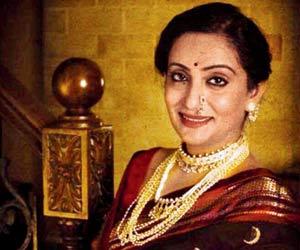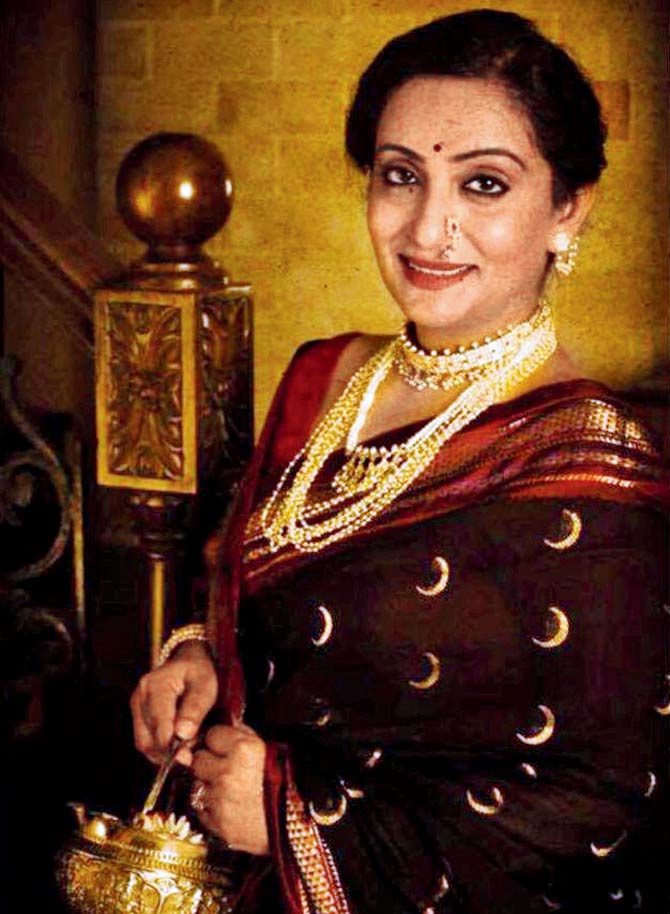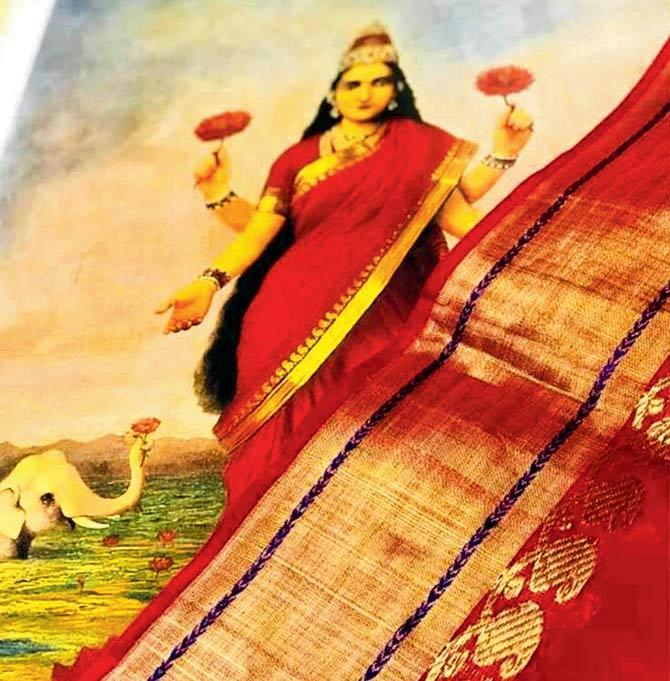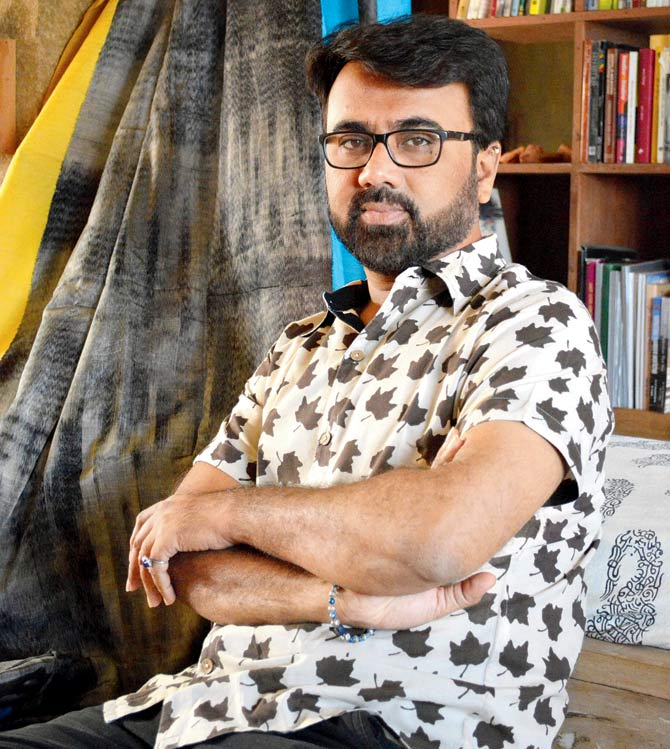Textile and saree designer Vinay Narkar looks at reviving the chandrakala saree that is associated with Makar Sankranti


The chandrakala saree
ADVERTISEMENT
Every Sankranti, many married Maharashtrian women follow the tradition of meeting for the haldi kumkum ceremony, draped in black sarees. However, the black chandrakala saree that is traditionally associated with this festival is hardly worn any more. This week, Solapur-based saree and textile revivalist Vinay Narkar will bring the handwoven saree back into the spotlight with an exhibition.

The traditional motif
"Last year, I worked with the Irkal tradition of sarees, which is predominantly a north Karnataka and Maharashtrian tradition. During the process, I came across the chandrakala saree. I had heard about it since my childhood, through my grandmother and in literature. But I had never seen one; even my grandmother didn't own one. Most Maharashtrian communities follow the tradition of gifting a chandrakala saree in black or indigo blue to a bride on her first Sankranti," says Narkar. Though black is usually considered inauspicious, Narkar feels that it might have to do with the northern movement of the sun and the end of winter. He also found references of the saree in other colours.

A saree inspired by Raja Ravi Varma paintings
With the intent to revive the saree, which represents a starry night, and uses the star or moon motif, Narkar headed to Baroda to find a photo of Maharani Chimnabai Gaekwad in a chandrakala saree. He also found an MV Dhurandhar painting in Chhatrapati Shivaji Maharaj Vastu Sangrahalaya of a woman draped in this saree. The north Karnataka districts of Gulbarga, Bidar and Bijapur also follow this tradition. "Originally, it was a nine-yard Irkal saree with star or moon butas made with khari print. It then extended to other weaving traditions such as the Paithani (with the motif being dots) and Chanderi. The motif of the moon with a flower is seen in the Benarasi tradition too. I have also used the intricate zari kasuti embroidery from Karnataka. Black Paithanis still exist, but chandrakalas were lost," rues Narkar. What sets the chandrakala saree apart from the others is that it's not a weaving tradition but an aesthetic; the saree can be woven using different techniques.

Vinay Narkar
Narkar feels that one of the reasons that led to a decline in popularity was the khari print used to make the motif. It would wear out in places and not last long. "Also, may be the style preferences changed with time. The biggest reason, which applies to most disappearing weaves of Maharashtra, is because it was one of the earliest states to be industrialised. Other regional sarees such as the Vidarbha saree, the Solapur saree, the Poona saree have all disappeared," he explains. For this collection, Narkar has worked on a cotton silk fabric to give the saree a vintage feel associated with the tradition.
'Textiles speak of history'
"Each region of India has different stories associated with its crafts. These fables are even mentioned in ancient Indian treatises. Craftsmen narrate these stories even today. Textiles also speak of recent history, as there was a distinct class segregation for weaves worn by the royals and the masses. The practice of gifting the black saree for Sankranti continues even today. My mother-in-law had gifted me a navy blue saree for Sankranti, which was the closest to black as we don't wear black in our family," says designer Shruti Sancheti who works with various weaving clusters of Maharashtra. Yellow for Saraswati pooja, and gold and red or white and red for weddings, the use of colour and motif bears specific significance. "I am a Rajput, and several people and royals from my community wear black on Diwali as it falls on amavasya," explains Sancheti.
Also check
Narkar will be displaying a set of contemporary sarees with the use of optical art. He has also recreated a Paithani from the Peshwa era, which is displayed in Raja Dinkar Kelkar Museum, Pune. The black saree uses the polka dot motif. "The gaudy Paithanis are a result of modern times. I found the dot motif in Mumbai's old markets where people sell zari from old sarees." Another story from the collection is the Raja Ravi Varma saree. "Ravi Varma was very fond of the nine-yard saree. Almost all his characters were seen wearing it. He has used the same design of the saree in different colours for his paintings - Laxmi in red, Saraswati in white, Radha in pink for romanticism, and Subhadra in blue," says Narkar.
From: January 11 to 13
At: ARTISANS', Kala Ghoda
Call: 9820145397
Download the new mid-day Android and iOS apps to get updates on all the latest and trending stories on the go
 Subscribe today by clicking the link and stay updated with the latest news!" Click here!
Subscribe today by clicking the link and stay updated with the latest news!" Click here!






